Solo Travellers
The Best Things to Do in Dubrovnik, Croatia’s Ambling Seaside City
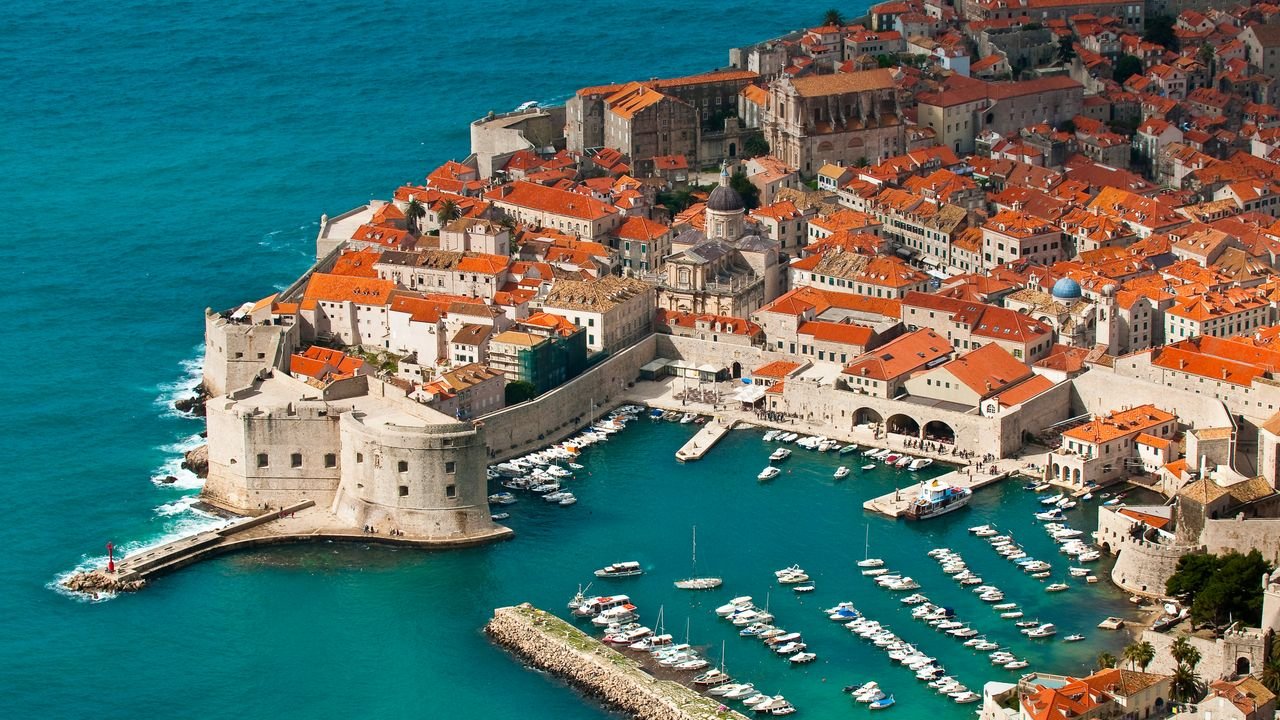
The Croatian city of Dubrovnik may have experienced a surge in popularity in recent years, but it has held a very special place in my heart for a long time, ever since I first visited in 2001. Back then, it was still recovering from the effects of the Croatian War of Independence, which had occurred some 10 years prior, and the Old Town was a battle-scarred yet relatively peaceful place to wander, slowly rebuilding itself. Walking around the Old City walls (which were free at the time), peering over mismatched tiles and gappy rooftops that grinned up at me like an old lady’s smile, I was struck by the remarkable resilience of this city and its people, by how imposing and enduring these walls are. Pandemics, fires, earthquakes, war—Dubrovnik has weathered them all. A UNESCO World Heritage Site since 1979, wider forces are at play to keep the city safe and peaceful, preserving its many treasures for future generations.
And what treasures it has. Wandering through the Old Town feels like stepping into one vast open-air museum. Add to this some exceptional local restaurants, superb boutique hotels, and a smattering of intimate wine bar—and you’re looking at a winning destination. I’ve been back many times since my first visit, and there are always new things to do in Dubrovnik—culture vultures will love the museums, street festivals, and rich history; beach lovers will have plenty of bays to explore; film buffs will recognize the many set locations; whilst the more adventurous can hike the numerous mountain trails and pine-scented paths that wind through the surrounding landscape.
How many days do you need in Dubrovnik?
I’ve met many people who swear by the long weekend approach, feeling that three days is ample to see everything the city has to offer. For me, that wouldn’t be quite enough because you’d miss out on the many day trips you can take from here—Ston, Konavle, the Elaphiti Islands, even down to Herceg Novi, Kotor, and Perast in Montenegro. But it really depends on which season you come, of course. Many people visit in the summer for a beach vacation, staying in Lapad or one of the hotels outside the city walls, and only occasionally dipping into the Old Town for the restaurants and museums. Such a rhythm could easily fill one or two weeks—longer still, if the mood takes you.
Winter presents an entirely different proposition: the weather can be genuinely challenging, with torrential downpours and storms that feel almost apocalyptic. Yet it’s also the city’s most tranquil and intimate season. A weekend would be perfectly suited to savoring the atmospheric bars and restaurants, browsing the Christmas markets, and perhaps visiting a museum or two. The Old Town is magical and mostly quiet during this time, and feels like a cozier place to stay than outlying areas.
The answer, therefore, depends on which season you come, and what you’re in need of. Whether it’s in summer’s peak or in winter’s most laid-back and romantic months, you certainly won’t leave disappointed.
Is there much to do in Dubrovnik?
There are enough things to do in Dubrovnik to fill several days, particularly if you’re inclined to explore further afield with excursions to the surrounding towns and villages. The Old Town itself can be seen over a couple of leisurely days—it’s compact enough so everything of note lies within comfortable walking distance. You’ll find a good selection of museums and galleries alongside the city’s most significant historical landmarks.
From there, the possibilities are endless: take a boat trip to the nearby islands, go hiking around the peninsula, or take a trip to Konavle for wine tasting and traditional village life, and Ston for oysters and medieval walls.
Best things to do in Dubrovnik
1. Walk the Old City Walls
Walking around the old city walls is a must-do experience in Dubrovnik. These formidable fortifications rise to an impressive 82 feet in places, testament to the city’s strategic importance through the centuries. The 1.25-mile circuit offers a glimpse into the past and breathtaking views over the Old Town and the Adriatic Sea, extending out to Lokrum and the Elaphiti Islands. Wear sensible shoes, take plenty of water (or refill at the old fountain near Pile Gate entrance), and, if you’re visiting in summer, go in the early morning (8 a.m.) or late afternoon to avoid the crowds and heat.
When you’re done, wander around the limestone alleys in the Old Town itself and get lost in the backstreets (it’s where all the cool cats hang out, quite literally). Admire the elegant architecture along the Stradun—the city’s grand main thoroughfare—before stepping inside the cathedral and Franciscan monastery, home to one of Europe’s oldest functioning pharmacies. Cap it all off with a well-earned beer at Buža Bar, dramatically perched just beneath the ancient walls themselves. The views are particularly lovely at sunset.
2. Lokrum Island
Regular boats ply the route between the old harbor and Lokrum Island. The scenic ride whisks you from city life to an island nature reserve—perfect for a day’s exploring. Check out the Benedictine monastery ruins, swim in the Dead Sea lake, spot the wild peacocks, and see the Iron Throne replica from Game of Thrones before heading back to the old town in time for dinner.
3. Rector’s Palace
The Rector’s Palace is one of the best museums for learning about Dubrovnik’s history, back when it was the Republic of Ragusa. It was here that each elected Rector would take up residence for exactly one month—a tradition of rotating governance that lasted until 1808. This Gothic-Renaissance-Baroque palace served as the nerve centre of the republic: government seat, administrative headquarters, courthouse, prison, and armory all rolled into one. Today, you can meander around its atmospheric rooms, including the Rector’s private quarters and bedchamber, as well as the former prison cells—then, if you’re lucky, catch a classical concert in its Renaissance atrium.
4. Ston and the Pelješac Peninsula
The Pelješac Peninsula is renowned for its wine and oysters, making a visit here a great day out. Oysters have been celebrated here since Roman times, and are best eaten raw with a dash of lemon. If you happen to be here in March, the Festival of Oysters is a great way to celebrate the area’s fresh produce. You can also visit family-owned vineyards, famous for their Dingač and full-bodied Postup wines, made from Plavac Mali grapes. Be sure to walk the medieval walls that link Ston and Mali Ston. Built as a defense for the Republic of Ragusa and to protect the lucrative salt pans, these walls are now the longest in Europe at 3.1 miles, giving them the nickname “Europe’s Great Wall of China.” Then, if you have time, you can check out the salt works themselves. To reach here, you can either book an organized tour from Dubrovnik, rent a car, or (if you plan on wine-tasting) catch the number 15 bus from the main bus terminal to Ston or Mali Ston (journey time around one hour and 15 minutes).
Solo Travellers
The ‘other’ Michelin award travellers should know

“When you go to a Bib Gourmand, it’s like you’re wrapped in the people, the culture, the ingredients,” said Ben Beale, a frequent traveller from Los Angeles who has sought out Bibs in cities like London and Hanoi. The Vietnamese capital has an impressive 22 Bibs, including renowned pho shop Phở Bò Lâm, which is famous for its beef heel muscle soups and where diners crouch on flimsy plastic stools.
Solo Travellers
11 Airbnbs in San Sebastián, Spain, From Family-Friendly Villas to Chic Penthouses
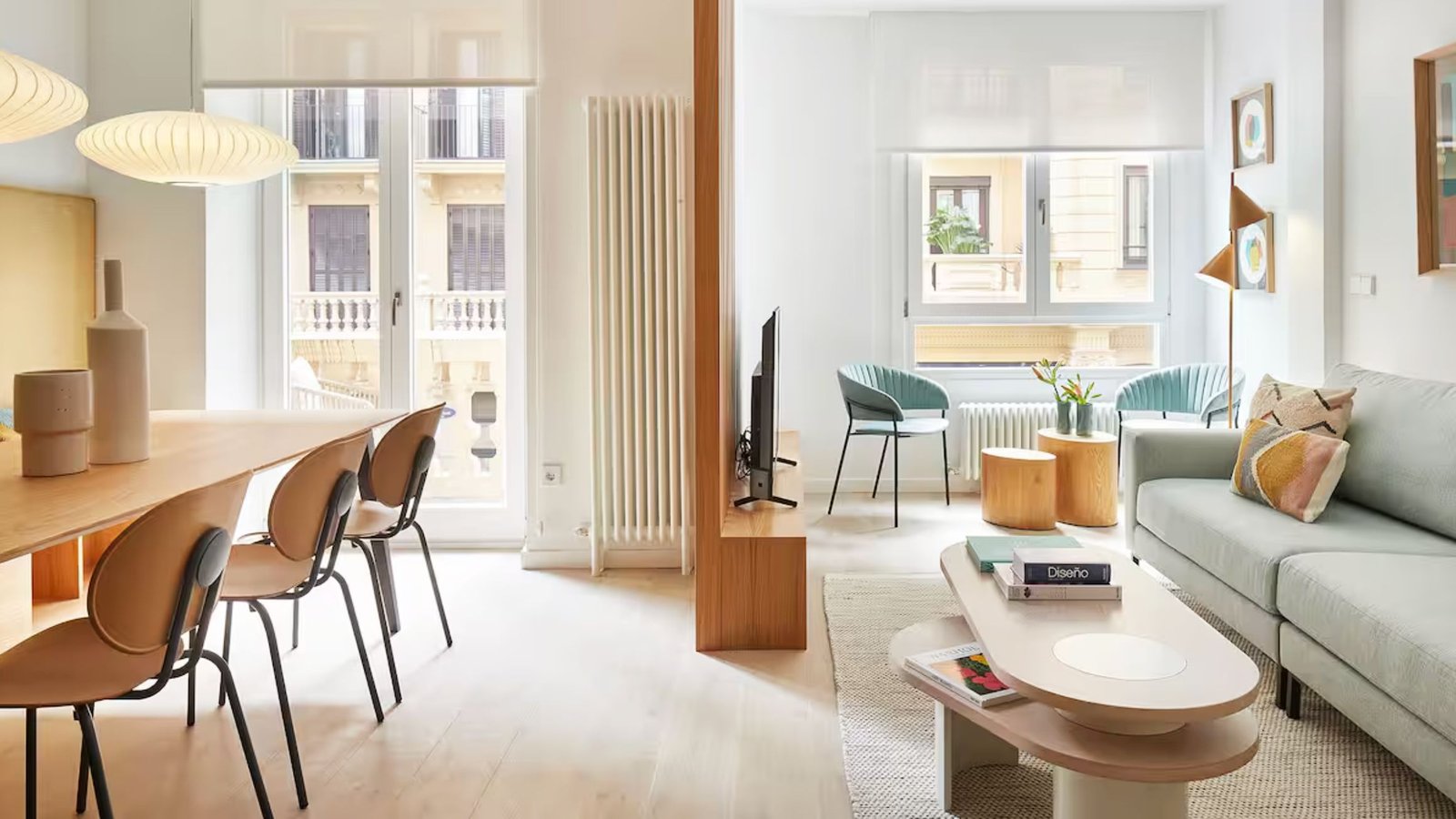
Bed & bath: 3 bedrooms, 2 baths
Top amenities: Sea views, proximity to the beach, wraparound terrace
Mere steps from La Concha beach, this smart home slots in the centre of the 808-mile-long sandy crescent, positioning it in the prime spot for cool sea dips and sunset beach strolls. Thoughtfully designed interiors sprawl across three bedrooms, two bathrooms, and an open-plan living space, the last of which follows a sophisticated dusky palette. A velvety, teal sofa fuses with the forest-themed wall prints, while the charcoal kitchen sits beside, satisfying all culinary needs with amenities like a dishwasher, blender, and coffee machine. Move to the bedrooms (two king-size and one twin) for a more airy theme, as light spills onto silvery satin bedspreads and lightwood cupboards, with plenty of space for all your luggage. The highlight, however, is that each room has direct access to the wraparound terrace, so rolling out of bed for morning coffees with a view has never been easier.
Solo Travellers
A Bad Bunny Puerto Rico Guide Inspired By the Megastar’s Island Residency
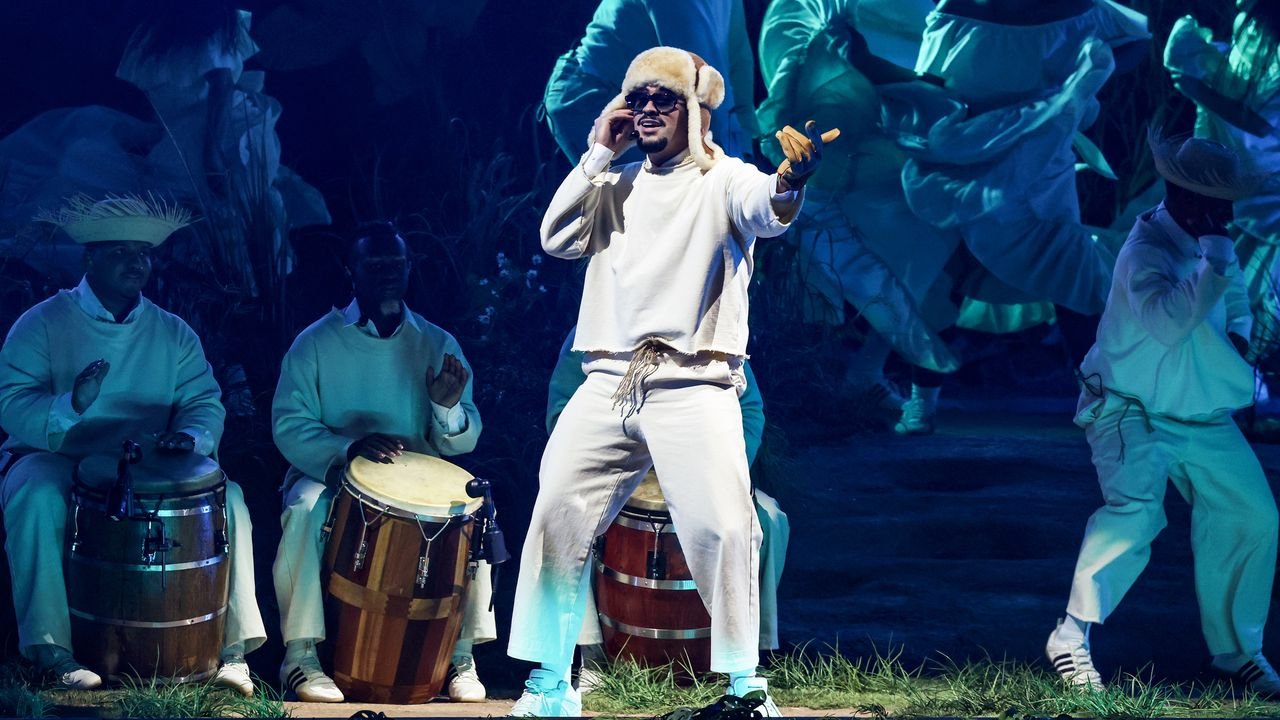
Recommended listening: “Nuevayol.” La Disquera once served as the San Juan office for Fania Records, the pioneering salsa label founded in New York City—the city Bad Bunny sings about in the namesake song (with a fabulous sample of salsa hit “Un Verano en Nueva York”). At El Choli, keep an eye open for a pop-up of Toñitas, the iconic Boricua bar in Brooklyn that he name checks in the song.
La Factoría cocktail bar
A day tour of Old San Juan is practically mandatory for any first-time visitor; but stay a little while after dark to see it come alive. La Factoría is famed for its crafty cocktails, as well as the labyrinthine setup of the space. There are multiple rooms to peruse, each with its own style of music and dance; in the largest, you’ll find locals and visitors mingling on the dance floor to salsa, merengue, and bachata, while other rooms offer electronic music and reggaetón on the weekends. There’s even a special enclave for the lovers and the introverts, who may appreciate the intimacy of a low-lit and low-volume space.
Recommending listening: “Baile Inolvidable.” There are no salsa dance classes to be found here—just feel the rhythm and find your own way.
Lala restaurant
Trip to the mall, anyone? Beyond the Nordstrom and Tiffany’s, inside the ritzy Mall of San Juan is an upscale Puerto Rican dining experience worth the hype. Partially owned by Bad Bunny and his manager, Noah Assad, the picturesque restaurant boasts a globetrotting experience encapsulated in its menu. It’s ideal for those traveling in groups with conflicting palettes; at Lala, one friend’s craving for pan-fried gyoza and hamachi can peacefully co-exist with another’s hankering for sweet corn agnolotti.
Recommended listening: “Perfumito Nuevo.” Be like Bad Bunny’s co-star RaiNao—get dressy, try out that new perfume you just bought.
Manzana de Java restaurant
“We believe that Puerto Rico, and the Caribbean, have more in common with Southeast Asia than people think,” says Juan Camilo Becerra, manager of Manzana de Java: an Antillean-meets-Asian fusion kitchen, located two blocks south of the Playa del Pueblo. Repurposed from an old ramen shop, this one-of-a-kind restaurant fashions tapas from the intersections of two tropical regions. Highlights from the menu include ceviche served in a cacao pod, lionfish chicharrones served with a green curry aioli, and a goat meat fricasse with tamarind and cashews.
Recommended listening: “Voy a Llevarte a PR.” Much like the song, which Bad Bunny dedicates to a faraway love interest, Manzana de Java is both sweet and spicy.
La Placita de Santurce
What appears to be a farmer’s market during the week transforms into a full-on bacchanal on the weekends. Nestled in the neighborhood of Santurce, this plaza is lined with bars blasting reggaetón—and the people spilling out of them to dance in the cobblestone streets. Start your night with Caribbean snacks at Jungle Bird and roam as you wish. On one block, you’ll find whole families singing karaoke outdoors; around the corner, you’ll see old men drinking beer, playing dominoes, and watching salsa videos on a big-screen TV. There’s also an abundance of murals to take drunken photos with, including a special Bad Bunny portrait celebrating his role in Puerto Rican music and culture.
Recommended listening: “Debí Tirar Más Fotos.” This is Puerto Rico at its best; in music, food and community.
-

 Brand Stories6 days ago
Brand Stories6 days agoBloom Hotels: A Modern Vision of Hospitality Redefining Travel
-

 Brand Stories1 day ago
Brand Stories1 day agoCheQin.ai sets a new standard for hotel booking with its AI capabilities: empowering travellers to bargain, choose the best, and book with clarity.
-

 Destinations & Things To Do7 days ago
Destinations & Things To Do7 days agoUntouched Destinations: Stunning Hidden Gems You Must Visit
-

 AI in Travel7 days ago
AI in Travel7 days agoAI Travel Revolution: Must-Have Guide to the Best Experience
-

 Brand Stories3 weeks ago
Brand Stories3 weeks agoVoice AI Startup ElevenLabs Plans to Add Hubs Around the World
-

 Brand Stories2 weeks ago
Brand Stories2 weeks agoHow Elon Musk’s rogue Grok chatbot became a cautionary AI tale
-

 Destinations & Things To Do1 day ago
Destinations & Things To Do1 day agoThis Hidden Beach in India Glows at Night-But Only in One Secret Season
-

 Asia Travel Pulse3 weeks ago
Asia Travel Pulse3 weeks agoLooking For Adventure In Asia? Here Are 7 Epic Destinations You Need To Experience At Least Once – Zee News
-

 AI in Travel3 weeks ago
AI in Travel3 weeks ago‘Will AI take my job?’ A trip to a Beijing fortune-telling bar to see what lies ahead | China
-

 Brand Stories3 weeks ago
Brand Stories3 weeks agoChatGPT — the last of the great romantics

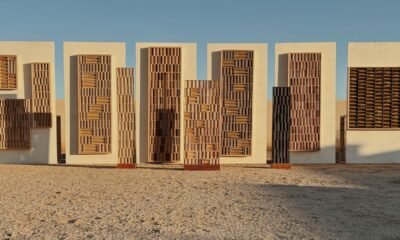









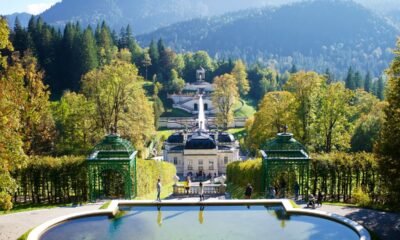

You must be logged in to post a comment Login